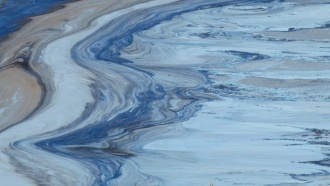

It is known for having the fastest growing population of any state in the country, and its capital is already being heralded as the major Australian urban centre of the future but Western Australia faces on enormous infrastructure problem.
The state and in particular its capital Perth has been experiencing hot weather and ever-diminishing rainfall, drying up the state’s system of dams and prompting water restrictions and dire warnings of shortages.
As panic over water supply sets in, two expensive and electricity-intensive desalination plants have been built. The Perth Seawater Desalination Plant, built in 2006, already supplies roughly 20 per cent of the city’s drinking water needs, and is powered by the Emu Downs Wind Farm. More recently the Southern Seawater Desal Plant, near Binningup in the Shire of Harvey, was opened in 2011. Prompted by further drought, the state government has already begun construction to double its capacity. Combined, the two plants currently provide 95 billion litres of drinking water each year.
But ‘Perth is a thirsty place’, as Jeff Charrois, director of the Curtin University Water Quality Research Centre, told RN Breakfast this morning, and a new trial is now well underway to produce drinking water from re-processed sewage.
The Beenyup Wastewater Treatment Plant, which already pumps seven million litres of treated waste water back into Perth’s aquifers each day, is experimenting with technology that is leading the way in Australia for water recycling.
‘It involves a lot of sort of advanced technology,’ Charrois told Breakfast. ‘Ultra-filtration: which is trying to get small bits out of the waste water. Then it goes through a reverse osmosis membrane, which takes out even smaller particles and chemicals. And then finally it goes through an ultra-violet disinfection step.’
‘It’s not sort of getting into the taps of people in Perth yet, but certainly, that would be what would be expected in the future.’
‘In the end in a drying climate, if water isn’t coming from the sky, you’re going to have to look for other options and so I’d say certainly in Perth we’re at that stage where we need to, you know, not only conserve every drop that we have, but look at other technologies to help meet the shortfall.’
State Environment Minister Bill Marmion faces the more challenging job of convincing voters to pay for and drink reprocessed sewage. He also spoke with Breakfast and said the Beenyup Plant has flung its doors open to visitors in an attempt to humanise the idea.
‘The visitors centre has been running for two years during the whole length of the trial. It’s open to anyone who wants to visit. We’ve had school groups through, right through to aged care groups going through and it’s been open for special days. We’ve even had the ABC Mornings program in WA run their program from there to encourage people to come and visit, and we’ve had about 7,300 people tour the facility during the two years of the trial.’
However, Beenyup’s operation is more complicated than simply piping water from the facility to people’s taps at home. First the recycled water is pumped into large aquifers that Marmion describes as ‘underground dams’. In particular, the water is used to replenish the Gnangara Mound massive fresh water supply that has been relied upon more and more in recent years to supplement water from dams and desal plants, causing stress on nearby ecosystems. Later, the water is pumped back out of the ground, treated, and used in the drinking water supply.
‘We will extract the water out of the aquifer further away, and then that’ll go through the normal water treatment process before it’s being drunk, so people don’t go to the trial and drink the water even though you could.’
Marmion says pumping the water underground before bringing it back to the surface metamorphosed as natural drinking water is not a case of out of sight, out of mind, but a necessity of Perth’s geography.
‘I’m an engineer myself… and indeed, engineers suggested that in other countries, they’ve put it [recycled water] into the dam. But… if you were going to put it into the dams you’d have to pipe it further, so there is a cost saving in injecting it into the aquifer.’
Marmion says the extent of the water crisis means the trial has bipartisan political support, but the challenge is convincing the Western Australian public, which he says is currently around 76% in favour of the idea.
‘But interestingly for those people that go through the visitors centre at the Beenyup Wastewater Treatment Plant, the survey afterwards shows that, if you assume that 76% is what the normal [approval rate] is in Western Australia, people that go through the trial come out at about 94-95%.
Gallagher Re has shed light on the significant challenges insurers face when providing coverage for…
The Australian government will disburse AUD 1.7 million (USD 1.1m/EUR 1m) in grant funding to…
GlobalData’s latest report, ‘Asia Pacific Renewable Energy Policy Handbook 2024’ is among the latest region-specific…
The electrical generation market is facing a number of challenges, including the need to increase…
Nuclear energy has emerged as a prominent player in Asia's energy landscape, offering a reliable…
The pursuit of a low-carbon future has gained significant momentum globally, and Asia stands tall…